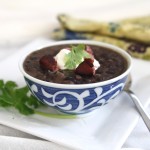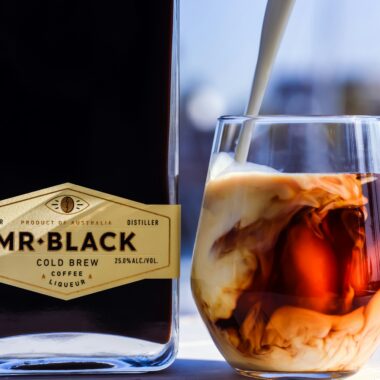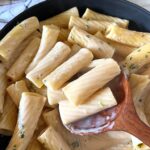Last Updated on February 16, 2025 by Karen
Discover the key to a flavorful pho broth with our detailed guide on choosing the best cuts of beef, from brisket to flank steak, and perfecting your pho at home.
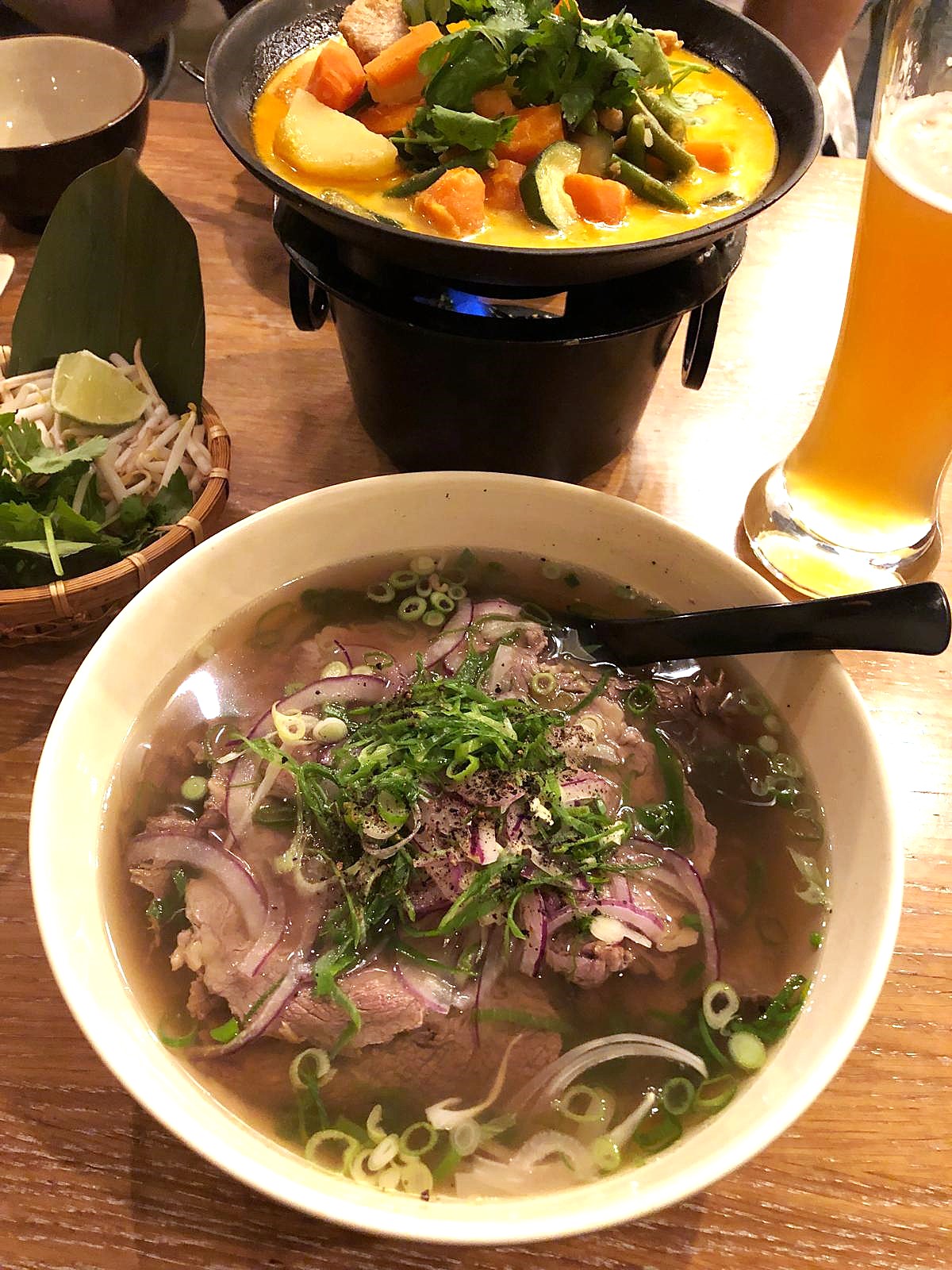
When it comes to making a hearty, flavorful bowl of pho, the choice of meat plays a pivotal role in determining the taste and texture of the dish. Pho, a traditional Vietnamese noodle soup, is known for its clear broth, aromatic spices like star anise, and tender slices of beef served over rice noodles. But when it comes to the beef, you might find yourself debating between beef brisket and flank steak.
These two cuts are both commonly used in pho bo, but they each bring something unique to the table. In this post, we will go over the differences between brisket and flank steak, examining which is the better choice for your beef pho next time you’re craving a steaming bowl of goodness.
What is Vietnamese Pho?
Pho is a traditional Vietnamese dish, widely regarded as the country’s national dish. It is a noodle soup that typically consists of a flavorful broth, rice noodles, and a variety of meats, most commonly beef or chicken. The dish is known for its aromatic broth, which is often made by simmering beef bones, herbs, and spices like star anise, cinnamon, and cloves for hours to create a rich, flavorful base.
The pho broth is then served over rice noodles (called bánh phở) and topped with thinly sliced meat, such as beef brisket, flank steak, or rare beef, depending on the variation. To add freshness and crunch, the dish is typically garnished with fresh herbs (like basil), bean sprouts, lime wedges, and sliced chili. Fish sauce, hoisin sauce, and sriracha can also be added to taste.
Pho is often eaten as a breakfast in Vietnam, but it’s enjoyed throughout the day in both casual eateries and Vietnamese restaurants worldwide. It has become a beloved and iconic dish with various regional variations, from the northern pho (with a simpler broth) to the more robust and fragrant southern pho.
This dish is a true reflection of Vietnamese cuisine, combining a delicate balance of aromatic spices, umami, and freshness. Whether enjoyed at a pho restaurant, made at home, or shared with friends and family, pho is a comforting and satisfying meal that has garnered fans across the globe.
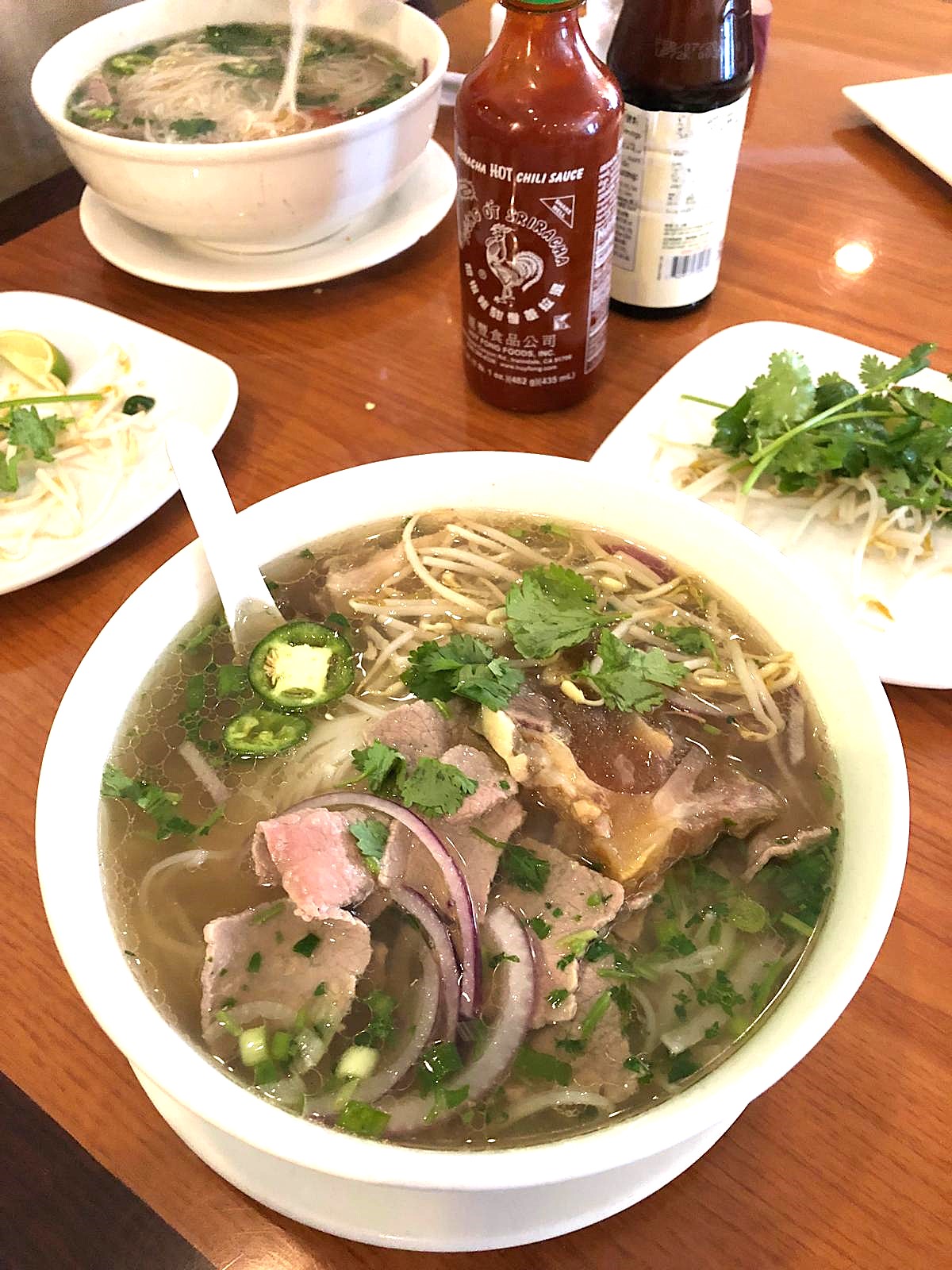
What is the Key to a Flavorful Bowl of Pho Broth?
The key to a flavorful pho broth lies in the balance of aromatic spices, high-quality bones, and careful simmering. To start, you’ll want to rinse your bones with cold water before simmering them, as this helps to remove impurities and create a clear broth. The beef bones, often a mix of beef shin, hind legs, and eye-round steak, should be simmered for hours, typically 6-8 hours, which is a labor of love for the best pho. This long simmering process extracts collagen and marrow from the bones, resulting in a rich, hearty broth that is full of flavor. After blanching the bones, bring them to a boil, then reduce the heat and allow them to simmer on high heat, occasionally skimming off any impurities.
To infuse the broth with its signature aromatic flavor, star anise, cinnamon, black pepper, and cloves are added, along with ginger and yellow onion, which should be charred over an open flame for extra depth. These ingredients, along with fish sauce, add layers of umami and complexity. Depending on your taste preferences, a pinch of rock sugar helps balance the saltiness from the fish sauce. This mix of spices and seasonings will give you the perfect base for your pho, whether you’re using flank steak pieces, trimmed flank, or chicken pho for the meat. If you’re preparing pho for the first time, it’s a good idea to taste the broth and adjust the seasoning as needed.
For the best pho experience, make sure your broth is served piping hot, with freshly cooked rice noodles and thinly sliced meats, like beef brisket or rare steak. The broth should be aromatic and clear, making it the perfect backdrop for all the fresh herbs, lime wedges, and bean sprouts typically added to bowls of pho. Adding hoisin sauce, hot sauce, or a squeeze of lime juice can personalize the flavor to your liking, just like you’d find in a pho joint. Whether you’re ordering from your favorite pho restaurant or making pho at home for the first time, using good pho broth is a good reason to invest time in perfecting the base.
The choice of meat can be adjusted depending on your preferences or what is available at grocery stores or Asian markets. Some pho recipes call for beef tendon, while others prefer beef meatballs or flank steak pieces. If you’re looking for a more adventurous version, you can even experiment with different cuts like ground beef or shank for a unique flavor profile. For a lighter alternative, vegetarian pho can be made by substituting the meat with tofu and vegetables, making it a great choice for those who prefer plant-based meals. Pair your pho with a banh mi or some egg rolls for a full meal. And if you want to take your pho game to the next level, consider looking up Tiktok – make pho recipes for fun variations and tips.
The broth really is the foundation of a great pho experience. Whether you’re making it in an instant pot or on the stovetop in a large pot, taking the time to craft a good broth will go a long way in achieving an authentic, flavorful bowl of pho. And once you’ve perfected it, you can always revisit the pho menu at your favorite Vietnamese restaurant for inspiration on other menu items or to discover more common pho meats to try next time. With all the care and attention that goes into it, pho is truly a dish worth savoring.
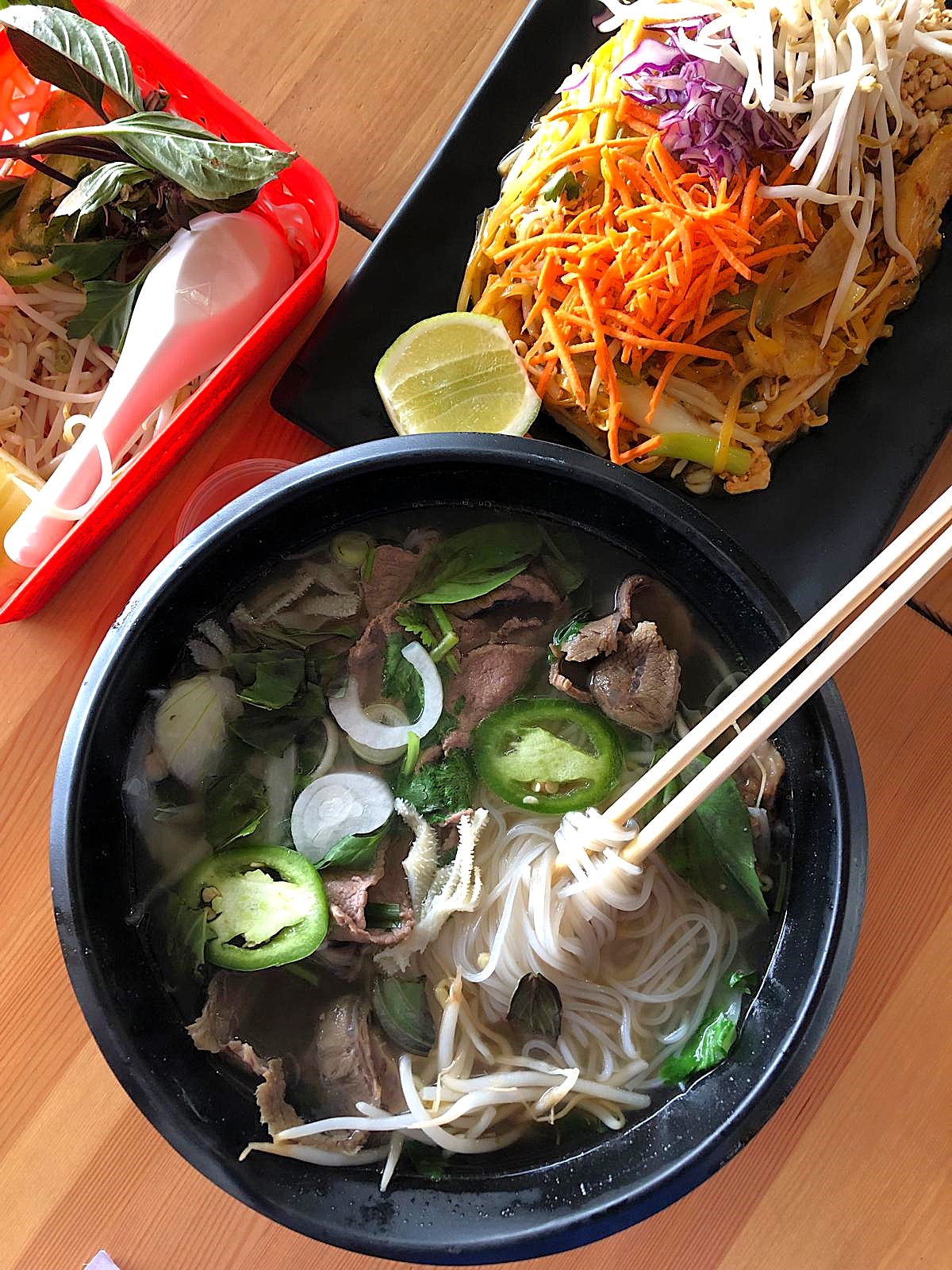
Beef Brisket: Tender and Fatty Cut of Beef
Beef brisket is a popular cut in pho restaurants for its balance of tenderness and fat content. This cut comes from the chest of the cow, and its marbling—fat interspersed within the muscle—gives it a rich flavor. In pho, fatty brisket adds much flavor to the broth as it simmers. During the cooking process, the connective tissue in the brisket breaks down, turning into tender pieces of meat that practically melt in your mouth.
When it comes to preparing brisket for pho, it’s usually simmered in the beef broth for a longer time than other cuts. The long cook time allows the meat to absorb the broth’s flavors while becoming incredibly tender. When served in your bowl, you’ll enjoy slices of brisket that are moist and full of flavor, with a silver layer of fat that adds richness to every bite. Many pho joints prefer brisket because of its ability to withstand long simmering times without losing its texture or flavor.
For those who enjoy well-done flank or beef tendon, brisket can be a great choice. It provides that tender, melt-in-your-mouth texture that is perfect for slow-cooked pho tai nam gan (beef pho with brisket and flank steak).
Flank Steak: Lean and Flavorful Cut of Beef
On the other side of the debate is flank steak. This cut comes from the lower abdominal muscle of the cow, offering a leaner option compared to brisket. Flank steak is known for its tough cuts and grainy texture, but when sliced thinly against the grain, it provides a slightly crunchy flank that holds up well in the broth.
The beef slices from flank steak are typically rare steak or medium-rare beef, offering a juicy, tender bite when served in a bowl of pho. Since flank steak cooks much quicker than brisket, it’s often added directly to the hot broth at the last minute, allowing the hot broth to slightly cook the meat while retaining its natural juices. Flank steak pairs beautifully with fresh herbs, such as basil, cilantro, and bean sprouts, which add a crunchy texture and bright flavor to the dish.
If you’re after a leaner option that still provides great flavorful meat, flank steak is an excellent choice. Many pho lovers appreciate the awesome flank beef taste, especially when it’s paired with a dipping sauce made of fish sauce and a squeeze of lime juice. It’s the perfect combination of savory and tangy.
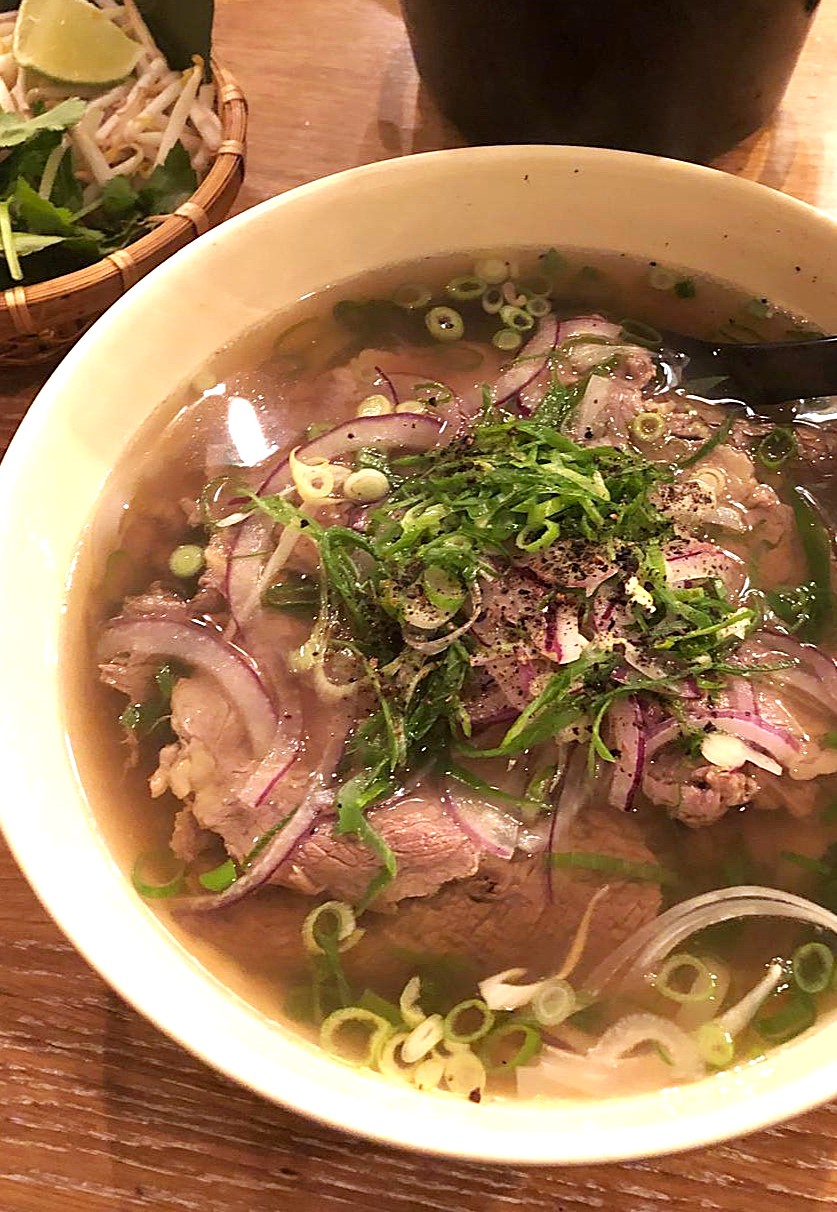
Which is the Best Cut for Pho: Brisket or Flank Steak?
So, which is better for your pho: brisket or flank steak? The truth is, it depends on your preferences.
Beef brisket is ideal for those who enjoy a fatty brisket with rich, tender pieces of meat that have soaked up all the flavors of the broth. The long cook time and connective tissue make it perfect for a hearty pho that’s filling and satisfying.
Flank steak is better for those who prefer a leaner option with a more pronounced texture. The crunchy flank and lean cuts offer a lighter pho, with rare beef that remains juicy and tender when added to the piping hot pho broth at the last minute.
For a more traditional pho experience, many people opt for both beef brisket and flank steak in their pho bowl. Combining the two offers a beautiful mix of textures and flavors, giving you a balanced bowl of pho that satisfies all your taste buds. You can even add beef meatballs for extra variety, or beef tendon for a richer, gelatinous texture.
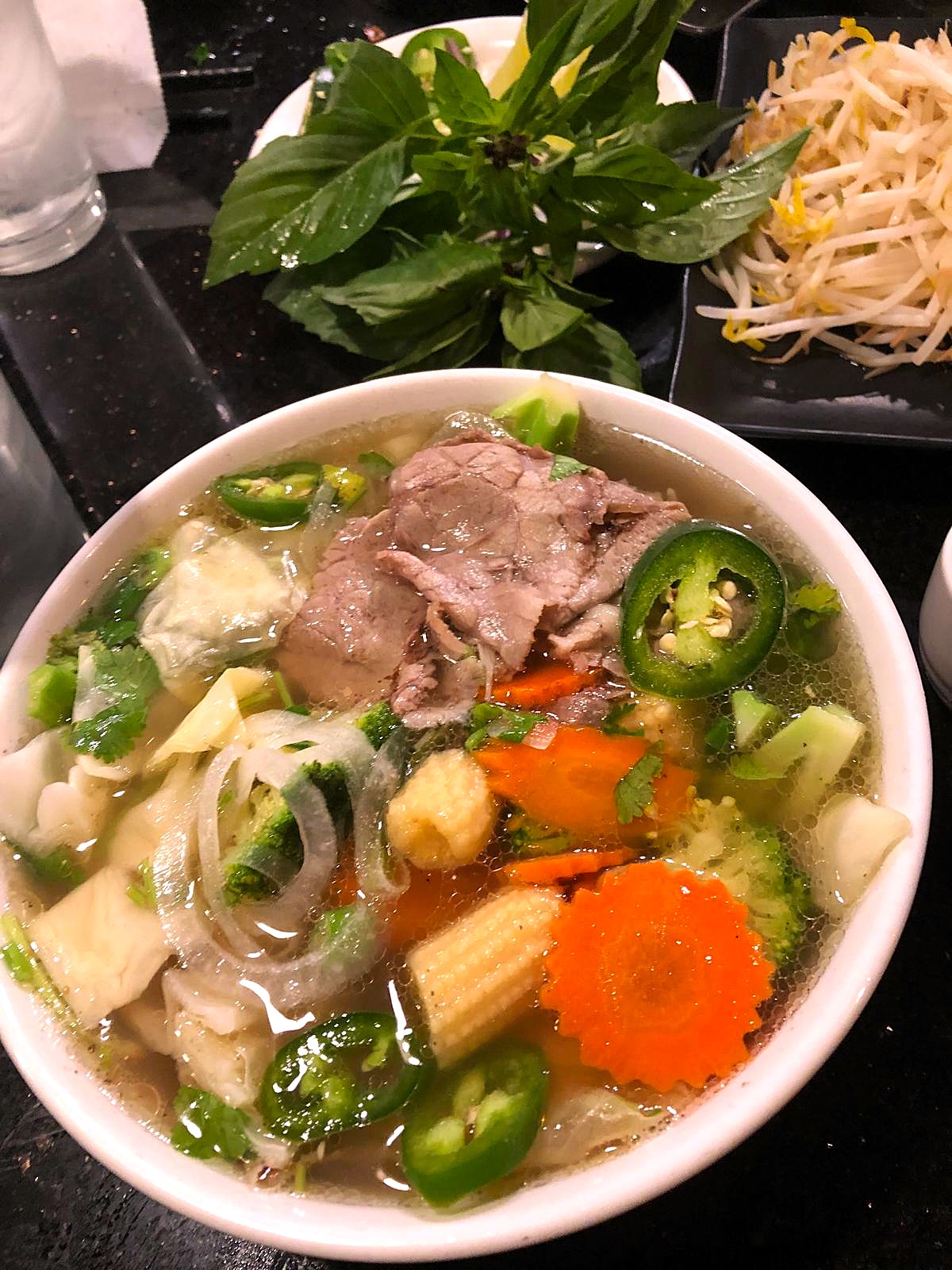
Tips for Making Pho at Home
If you’re making pho at home, here are some tips to ensure your beef slices turn out perfectly:
Use a Large Pot: Whether you’re using beef brisket or flank steak, make sure to use a large pot to make enough broth for everyone.
Don’t Overcook the Meat: If you’re adding flank steak to your pho, it’s best to add it towards the end of the cooking process so it remains rare or medium-rare. Overcooking will cause it to become tough.
Use High-Quality Broth: Whether you’re using beef bones, bone marrow, or a store-bought broth, make sure your broth is rich and full of flavor. This is the base of your pho, so it’s important that it tastes great.
Serve with Fresh Herbs and Lime: The fresh herbs (cilantro, mint, Thai basil) and lime wedges are crucial for adding brightness and crunch to your pho.
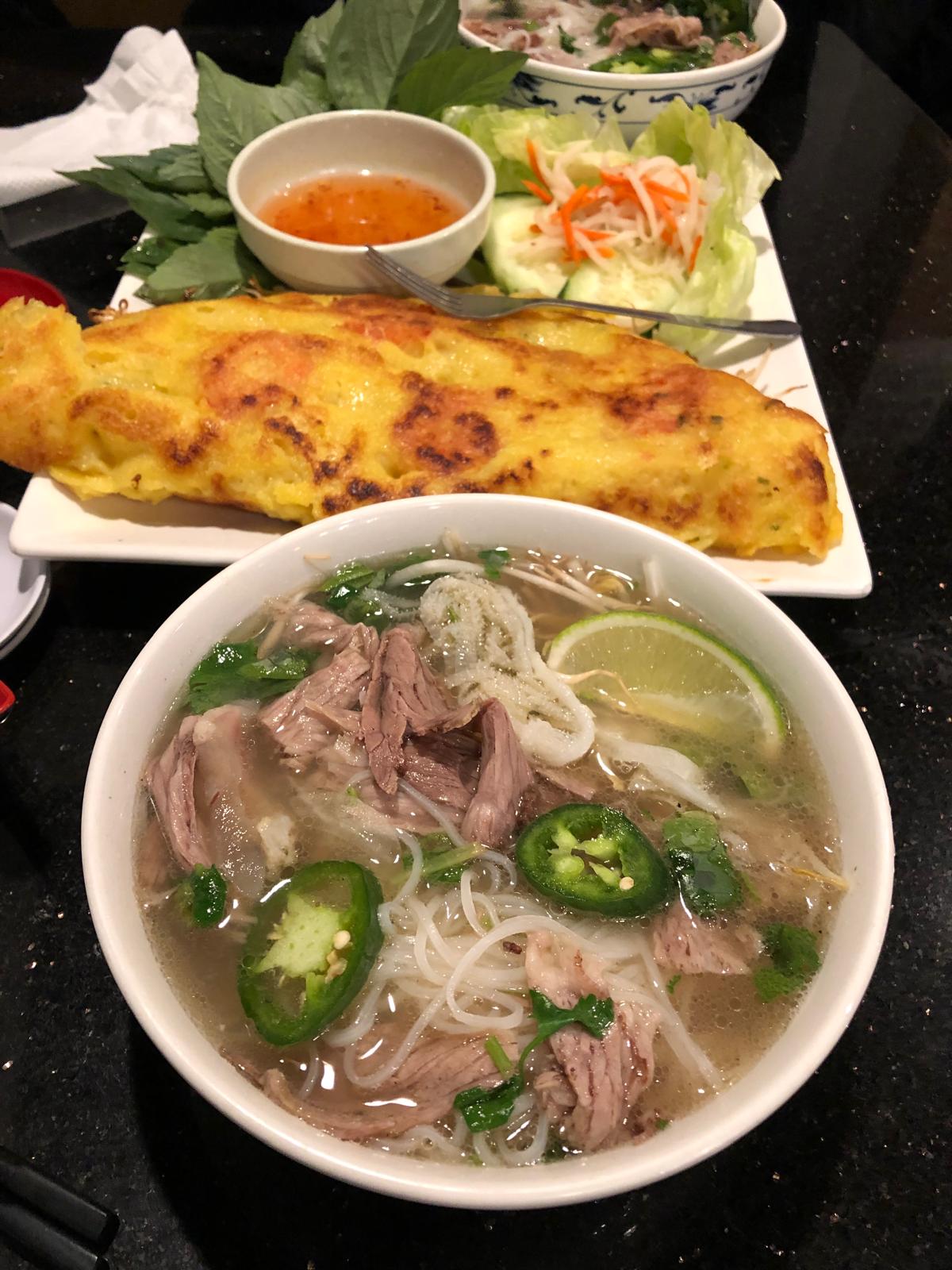
Final Thoughts
Ultimately, whether you prefer beef brisket or flank steak in your pho comes down to personal preference. Some people say the fatty brisket is the best meat due to its tender, melt-in-your-mouth texture, while others prefer the lean, crunchy flank steak piece that holds up well in the hot broth. Either way, both cuts of beef offer something unique to your pho bowl, so why not try both the next time you visit a Vietnamese restaurant or cook at home?
Pho is a dish rich in history, and using the best cuts of beef for your bowl of pho will help you experience the authentic flavors that have made this Vietnamese food a beloved national dish around the world.

